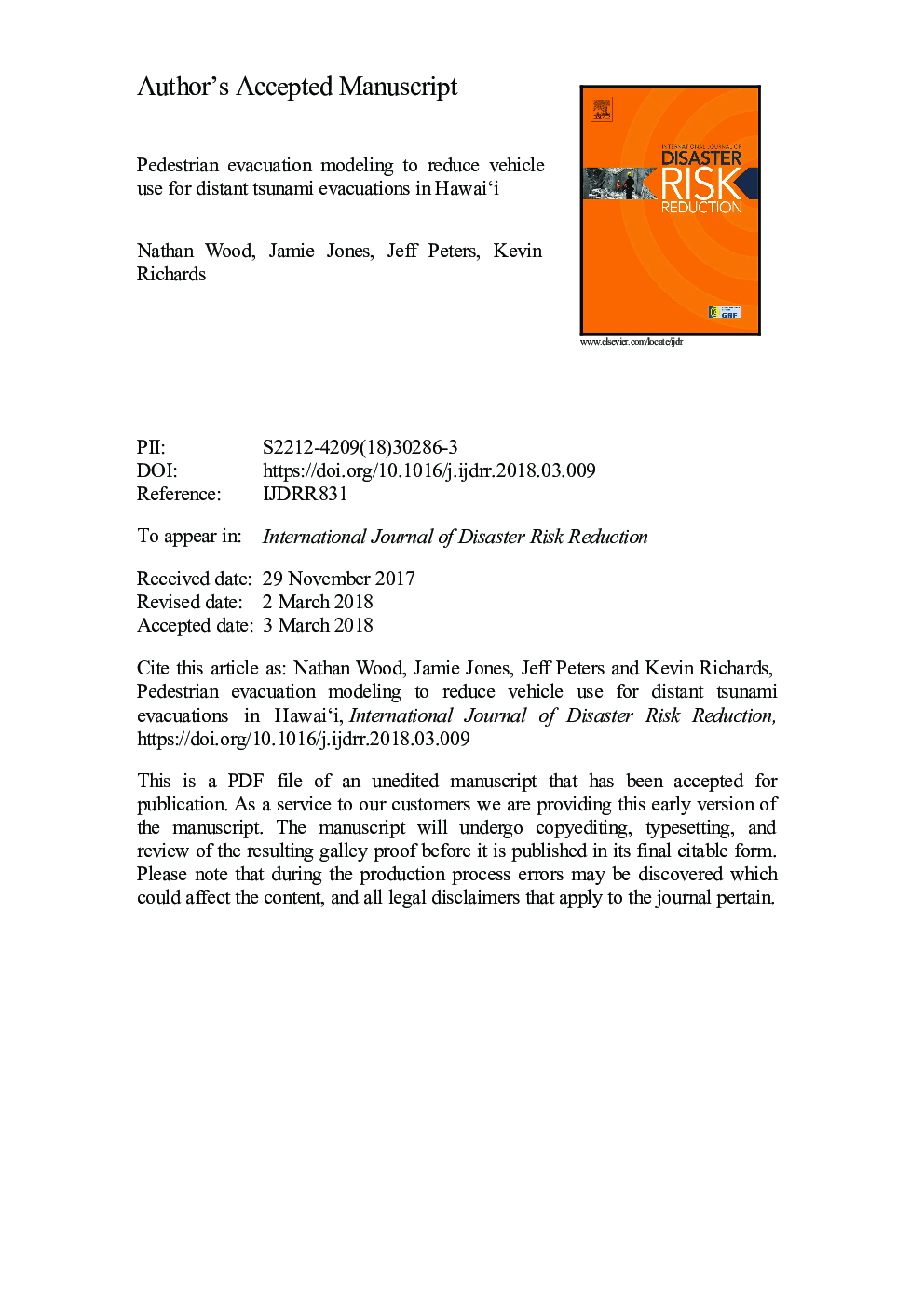| کد مقاله | کد نشریه | سال انتشار | مقاله انگلیسی | نسخه تمام متن |
|---|---|---|---|---|
| 7471569 | 1485142 | 2018 | 33 صفحه PDF | دانلود رایگان |
عنوان انگلیسی مقاله ISI
Pedestrian evacuation modeling to reduce vehicle use for distant tsunami evacuations in Hawaiʻi
دانلود مقاله + سفارش ترجمه
دانلود مقاله ISI انگلیسی
رایگان برای ایرانیان
کلمات کلیدی
موضوعات مرتبط
مهندسی و علوم پایه
علوم زمین و سیارات
فیزیک زمین (ژئو فیزیک)
پیش نمایش صفحه اول مقاله

چکیده انگلیسی
Tsunami waves that arrive hours after generation elsewhere pose logistical challenges to emergency managers due to the perceived abundance of time and inclination of evacuees to use vehicles. We use coastal communities on the island of OÊ»ahu (HawaiÊ»i, USA) to demonstrate regional evacuation modeling that can identify where successful pedestrian-based evacuations are plausible and where vehicle use could be discouraged. The island of OÊ»ahu has two tsunami-evacuation zones (standard and extreme), which provides the opportunity to examine if recommended travel modes vary based on zone. Geospatial path distance models are applied to estimate population exposure as a function of pedestrian travel time and speed out of evacuation zones. The use of the extreme zone triples the number of residents, employees, and facilities serving at-risk populations that would be encouraged to evacuate and slightly reduces the percentage of residents (98-76%) that could evacuate in less than 15â¯min at a plausible speed (with similar percentages for employees). Areas with lengthy evacuations are concentrated in the North Shore region for the standard zone but found all around the OÊ»ahu coastline for the extreme zone. The use of the extreme zone results in a 26% increase in the number of hotel visitors that would be encouraged to evacuate, and a 76% increase in the number of them that may require more than 15â¯min. Modeling can identify where pedestrian evacuations are plausible; however, there are logistical and behavioral issues that warrant attention before localized evacuation procedures may be realistic.
ناشر
Database: Elsevier - ScienceDirect (ساینس دایرکت)
Journal: International Journal of Disaster Risk Reduction - Volume 28, June 2018, Pages 271-283
Journal: International Journal of Disaster Risk Reduction - Volume 28, June 2018, Pages 271-283
نویسندگان
Nathan Wood, Jamie Jones, Jeff Peters, Kevin Richards,